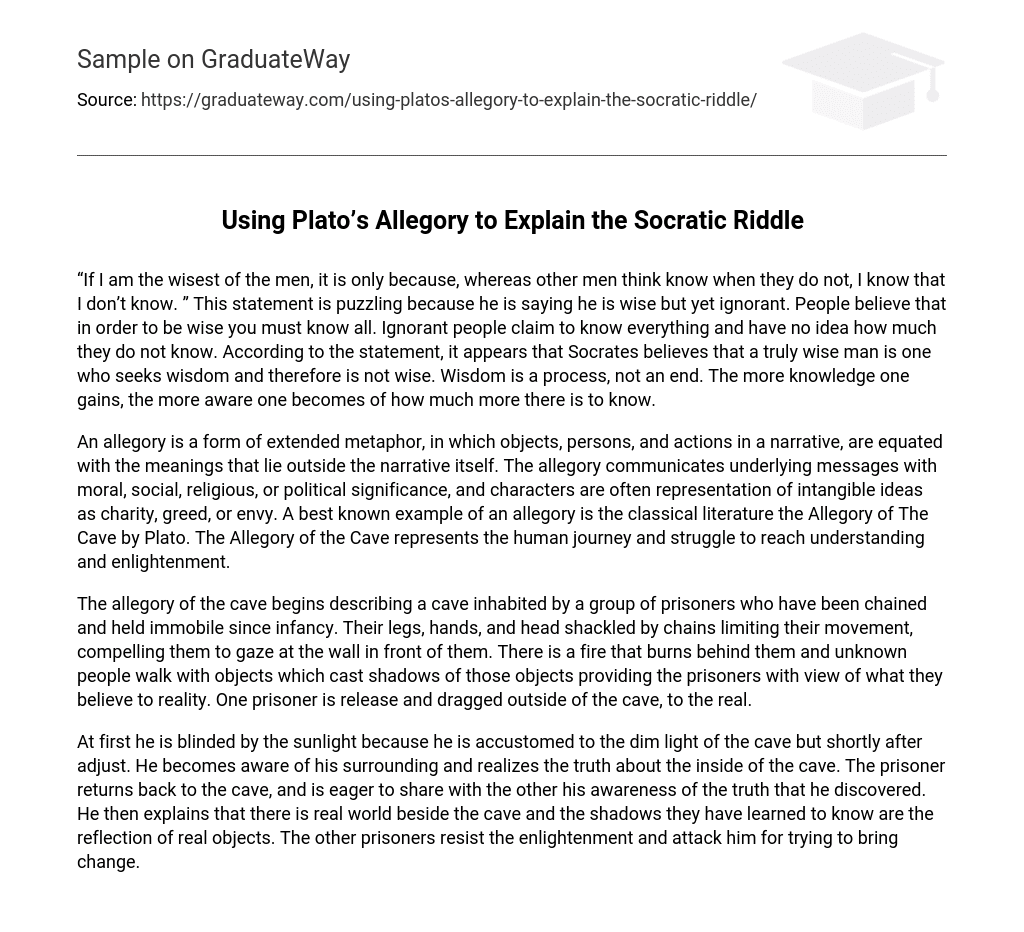According to Socrates, he asserts his status as the most knowledgeable individual by recognizing his lack of knowledge, in contrast to others who mistakenly believe they possess knowledge. This assertion implies that wisdom entails admitting one’s lack of understanding and persistently seeking knowledge. Wisdom is not a fixed endpoint but an ongoing expedition where as we acquire more knowledge, our awareness of how much we are unaware increases.
An allegory is a type of extended metaphor that uses objects, people, and actions in a story to symbolize deeper meanings beyond the story itself. This form of storytelling communicates moral, social, religious, or political messages and often has characters representing abstract concepts like charity, greed, or envy. One famous example of an allegory is Plato’s literary work known as the Allegory of The Cave. In this allegory, the cave serves as a representation of humanity’s pursuit for knowledge and enlightenment, emphasizing the obstacles and victories encountered during this journey.
The allegory of the cave illustrates a situation where prisoners have been confined and immobilized in a cave since birth. Chains bind their legs, hands, and heads, restricting their mobility and forcing them to stare at the wall before them. A fire burns behind them, and unidentified individuals pass by with objects that cast shadows on the wall, presenting the prisoners with what they perceive as reality. Eventually, one prisoner is freed and dragged out of the cave into the actual world.
At first, the prisoner is momentarily blinded by the sunlight because he is used to the dim light inside the cave. Nevertheless, he rapidly adjusts and perceives his surroundings, discovering the truth about what lies within the cave. Driven to enlighten his fellow prisoners regarding this newly obtained knowledge, he returns to the cave. He discloses that an authentic world exists beyond the cave and that the shadows they are acquainted with are merely reflections of real objects. Regrettably, the other prisoners stubbornly resist this enlightenment and vehemently oppose his endeavor to instigate change.





